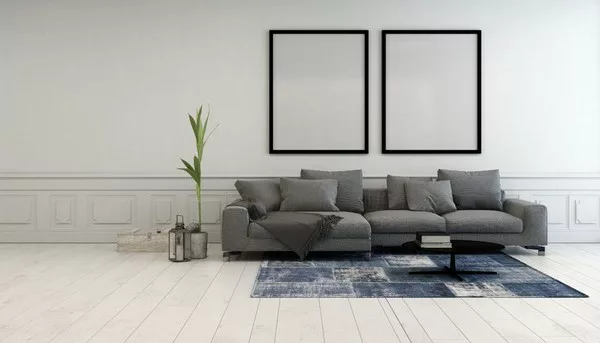In a world that often seems cluttered and chaotic, many individuals are turning to minimalist design principles to create a sense of calm and simplicity within their homes. The philosophy of minimalism revolves around the idea of less is more, emphasizing clean lines, functional spaces, and a focus on essential elements. If you’re looking to transform your living space into a haven of tranquility and timeless elegance, read on to discover the key principles of minimalist design and how to incorporate them into your home.
1. Start with a Clean Slate:
Before diving into the world of minimalist design, it’s crucial to declutter and streamline your living space. Begin by assessing each room and identifying items that are essential and bring joy. Donate or discard items that no longer serve a purpose or hold sentimental value. By starting with a clean slate, you create a foundation for a minimalist aesthetic that fosters a sense of openness and serenity.
2. Embrace Neutral Color Palettes:
Minimalist design often features neutral color schemes, such as whites, grays, and earth tones. These colors not only create a clean and timeless look but also contribute to a sense of calmness. Consider painting your walls in light shades to maximize natural light and make the space feel larger. Neutral colors serve as a backdrop for key design elements and allow the beauty of simplicity to shine through.
3. Focus on Essential Furniture:
When selecting furniture for a minimalist home, opt for pieces with clean lines and a functional purpose. Avoid excess ornamentation and unnecessary details. Consider multifunctional furniture that serves dual purposes, such as a sleek coffee table with built-in storage or a minimalist sofa that can double as a guest bed. The key is to prioritize function over form while maintaining a cohesive and harmonious look.
4. Declutter and Organize:
Minimalism goes hand in hand with a clutter-free environment. Implement effective storage solutions to keep belongings out of sight, maintaining a clean and uncluttered appearance. Invest in storage furniture that seamlessly blends into the overall design, such as floating shelves, hidden cabinets, and modular storage units. Keeping your space organized contributes to a sense of order and tranquility.
5. Let in Natural Light:
Maximize the use of natural light to enhance the minimalist aesthetic. Remove heavy curtains and opt for light, sheer fabrics or blinds that allow sunlight to filter through. Natural light not only brightens up the space but also creates a connection with the outdoors, bringing a sense of nature into your home. Large windows, glass doors, and strategically placed mirrors can amplify the effects of natural light, making the space feel airy and expansive.
6. Select Thoughtful Decor:
In a minimalist home, every decor item should have a purpose and contribute to the overall aesthetic. Select a few statement pieces that align with the clean and simple design philosophy. Consider incorporating natural elements, such as potted plants or a vase of fresh flowers, to bring life and warmth to the space. Artwork with a minimalist vibe, such as abstract paintings or sculptures, can also serve as focal points without overwhelming the room.

7. Invest in Quality Over Quantity:
Minimalism is not about austerity; it’s about quality and intentionality. Invest in high-quality, durable pieces that stand the test of time. Choose furniture and decor items that showcase craftsmanship and longevity, avoiding the temptation of disposable, mass-produced goods. By prioritizing quality over quantity, you create a space that exudes sophistication and refinement.
8. Incorporate Texture and Layers:
While minimalism often emphasizes simplicity, incorporating texture can add depth and visual interest to your space. Introduce tactile elements through the use of soft rugs, textured fabrics, and subtle patterns. This allows for a layered look without compromising the overall minimalist aesthetic. Be mindful of maintaining a sense of balance, ensuring that each texture complements the space’s clean and uncluttered atmosphere.
9. Practice Mindful Consumption:
Minimalism extends beyond design choices to a lifestyle philosophy. Adopt a mindset of mindful consumption by carefully considering each purchase. Focus on acquiring items that bring value to your life and align with your aesthetic preferences. By being intentional about your belongings, you can create a home that reflects your personality and promotes a sense of well-being.
10. Foster a Sense of Tranquility:
Ultimately, the goal of styling your house like a minimalist is to foster a sense of tranquility and simplicity. Embrace the beauty of open spaces, uncluttered surfaces, and a mindful approach to design. Allow your home to be a reflection of your values and a sanctuary where you can unwind and recharge amidst the chaos of the outside world.
In conclusion, creating a minimalist home is not about sacrificing comfort or personal style but about curating a space that enhances your well-being and allows you to appreciate the beauty of simplicity. By incorporating these principles into your design process, you can transform your living space into a haven of tranquility and timeless elegance, embracing the essence of minimalist living. Remodern Living begins with a conscious effort to simplify, declutter, and appreciate the inherent beauty of less. Visit us!
